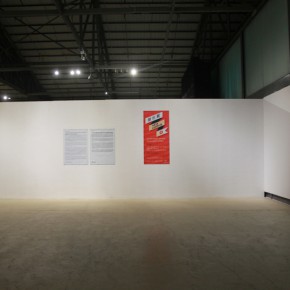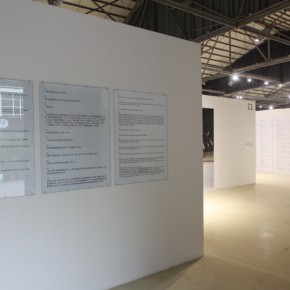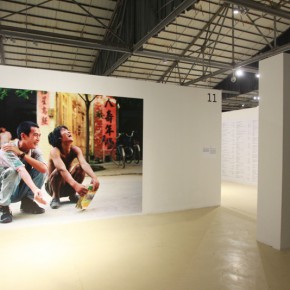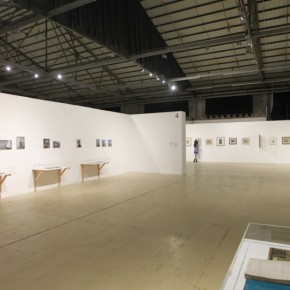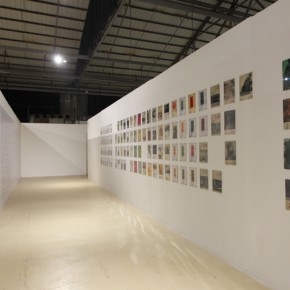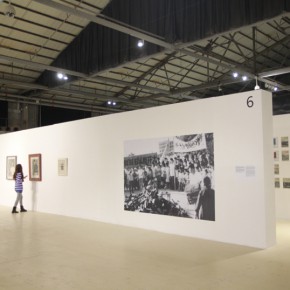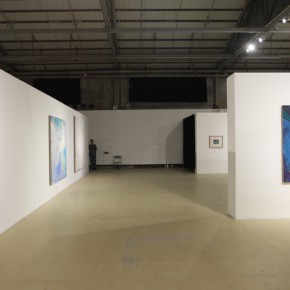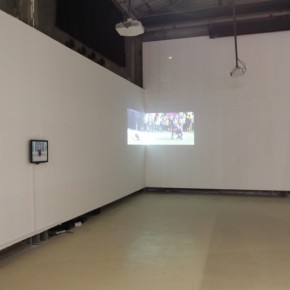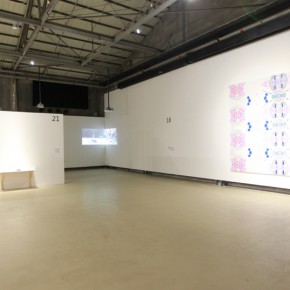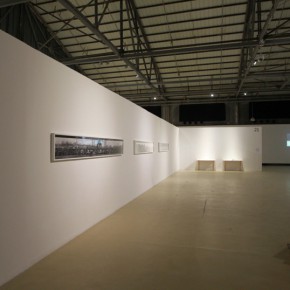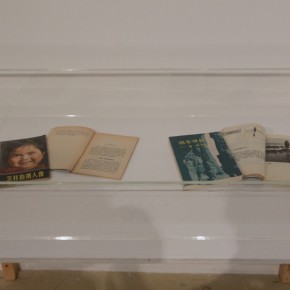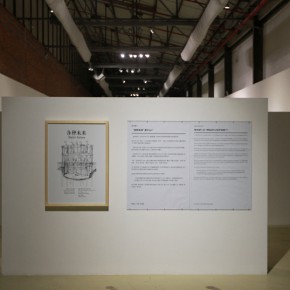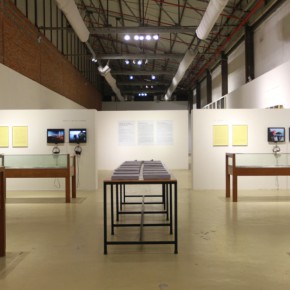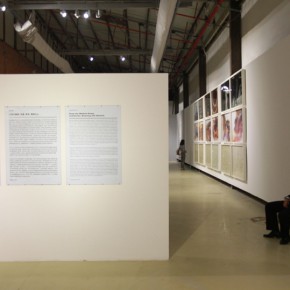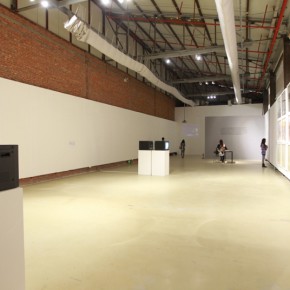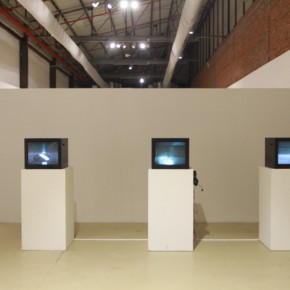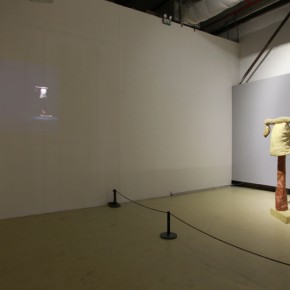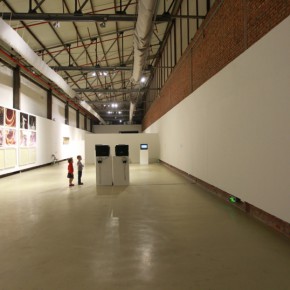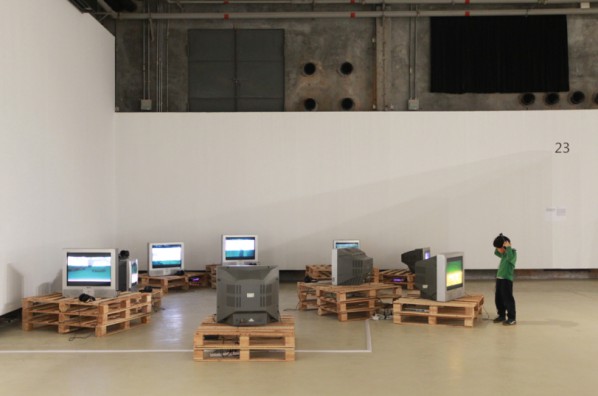
The first concern of New Works #1 is the past, it presents the discovery and thinking from the research work by taking a second look, a second discussion and a second evalution on the history. Thus, this exhibition not only refers to creation and thinking of the cutting edge in art domain, but it's also a rediscovery and a rediscussion of the past work. Taking a second look is to rediscover our work and our thoughts that are not fully discussed, seeking to understand the basis and the position of our current work in a better way. New Works #1 will display the new creations of our artists as well as some works which were exposed in the past. Meanwhile, it will become a new platform for curatorial practice and integrating theory into practice, promoting our consciousness and creativity in the theories and the ideological field by self-definition and self- description.
From the Issue of Art to the Issue of Position: Echoes of Socialist RealismCurated by: Carol Yinghua Lu
Curatorial Assistant: Qu Chang
From the Issue of Art to the Issue of Position: Echoes of Socialist Realism is a presentation of the first stage of an ongoing research by sampling a selection of works, ideas and positions from the research. The concerned research surveys and explores the origin of socialist realism as a commonly employed and internalized technique of creation, an aesthetic principle, a way of thinking and a mechanism of dissemination, subject to the overbearing ideological control. It also examines the evolution of socialist realism from an omnipresent and absolute presence to its subsequent inconspicuousness and even to becoming a subject of criticism and desertion, which is intricately imbedded in the course of modernization in the field of contemporary art in China.The exhibition attempts to re-confront and reassess how realism influences and molds our value judgment in culture as a way of thinking in the organization of our social life. It seeks to extend the observation of contemporary art practice in China beyond the year of 1976 and to take it to the point as early as around the year of 1949. We wish to place the discussion of art in a framework that is parallel to the intellectual history in China and to consider the movement of art in close relationship to the process of modernization in China.
This exhibition reflects critically on the logic underlying our perception and evaluation of contemporary art practice over the last three decades and gives detailed depiction of the lasting effect and echoes socialist realism as well as the consciousness and logic it inspires and contains on our work. The exhibition presents a selection of related documentations and artists’ works, both new and old. Most of these works can barely find their positions in the common narrative of art “that carries the antagonistic spirit intrinsic to contemporary art” or can hardly associate themselves with those so-called “ideologically minded” practices. Yet these works and thoughts are exceptionally self-reflective rooted in the consideration of practice and its internal issues. They demonstrate the thinking of individual artists and their individualized worldviews. They don’t belong to the kind of work that is based on a collective sense of value. In this very exhibition, we have borrowed loosely a method widely employed in archeology, using numbers to identify each of the exhibited artists or event or practice, in order for the works and documentations presented to appear with a of possibility for multiple interpretations that are yet to be uncovered.
To revisit the past is to rediscover the work and the genealogy of ideas that were yet to be fully explored and recognized. It is to expand the historical dimensions within which we practice. It is to comprehend and perceive the foundation and position of our current work in a richer and more open context. It is to resist the decontextualised modes of working and rhetoric in art along with their accompanying amnesia, omission and their tendency to live the present as if there were no past or no future, indulged in an apocalyptic revelry.
Keep the Modern Going: Immersion, Awaiting and IdealismCurator: Su Wei
How do we keep on? Having been through a decade of celebration and frustration after 2000 in Chinese art scene, we asked. It isn’t an unusual reaction, but rarely have we asked why. Parallel to the social progress in China, we have been sharing many questions surrounding modernity with the rest of the world, which is evident in the establishment of contemporary art history of the last thirty years. However, to art criticism, the question of modernity itself is a profound challenge yet to be confronted. We could seldom differentiate modernized process and modern appeals, nor have enough awareness of the fact that we still remain in this very process. The concept of modernity is often deciphered as a phase towards the ‘post-modern’ and the contemporary. As we are convinced to have completed the transition from the modern to the contemporary, both aesthetically and narratively, the collective subconscious to historicize and absolutize modernity still hasn’t been shed; while celebrating our participation in globalism, the inability to answer our own local issues is still glaring. In social, cultural and intellectual realms, efforts to defy dualisms, such as East–West, tradition–modernity and theory–practice, is transforming into a more self-assured and confrontational energy towards native realities; in our artistic context, however, one’s familiarity with artistic motifs under modernity, as you can believe, often stems from a spiritual yearning or desertion. The reflection on those artistic motifs and their contradictions has not extended to our own spiritual catalogue or practice, but is more like a satisfaction after worship, and a bystander’s objectivity.
Not only is the burden left on us by socialist realist education of the previous decades a hollowness of language formality and spiritual values, it is also the frail inability to assess the relationship between self and the environment, and reality. Deprived of spiritual strength and senses that come from the living reality, our self-assurance has been repeatedly scattered by the daunting imports of (post-)colonisation and ‘end of history’ convictions. We wait for the end of all these, we wait for a renaissance, even still waiting for the answer from the land we long for; but we can’t wait for ourselves, for we have been buried deep inside the spell of egotism and globalism.
Nonetheless, the modern keeps going in the landscape of art, not as a continuation of historical narratives, but spiritual strength. This strength is the crux of the introspection of modernity and current practices, the momentum to question our reliance on cultural and institutional construction, in order to weave our true intellectual catalogues. Rethinking modernity is to rethink the history of our understanding of it, and rethink the modern concepts—revolution and repetition, contemplation and violence, poetry and reality—which we once improvidently employed in aesthetics, and revisit the questions of how to advance intellectual progression in modern forms such as repetition, degrees, circulation and fluctuation. Therefore, the carefully selected works in the project with highly formalized motifs would symbolically project these paradoxical modern concepts and forms, and in an aesthetic way, examine and re-discuss the routes of intellectual progression, and its relationship to our reality which direly needs to be studied. ‘The modern’, as an intellectual energy, will not provide another blueprint to keep marching on, but a pathway, to true self-discovery.
Multi-FutureCurators: Wang Wei, Shen Boliang
“Multi-future,” initiated in 2011, is an amalgam of text, image, video media plus individual practice.
We are not concerned with “future” in terms of material technology so much as with changes in thought and consciousness which are happening or will happen due to influences from current reality.
“Multi-future” is like a probe inserted into a succession of themes, adding to our grasp of governmental, or therapeutic, possibilities amidst changing realities.
Some themes of “Multi-future” borrow a geographical approach, drawing on what occurs in a local environment and touching on how events or actions fit into natural history or the history of ideas.
Another set of themes in “Multi-future” will relate directly to particular concepts. For instance we will look at the future of “mediocrity,” the future of “praxis,” the future of “intellectualism,” the future of the “crowd,” and even the future of “authorship.”
When the themes of “Multi-future” are elaborated to a sufficient quantity and degree, it is hoped they will draft a map of consciousness in China quite unlike one determined by a state perspective or by vested cultural models.
In his Prison Notebooks, Antonio Gramsci wrote:
The starting point of critical elaboration is the consciousness of what one really is, and is “knowing thy-self” as a product of the historical process to date which has deposited in you an infinity of traces, without leaving an inventory.
We hope that ‘Multi-future’ will become the kind of “inventory” that Gramsci had in mind. Within it people can look up an ongoing history of how people relate to their possibilities.
The exhibition will remain on view till April 12.
Courtesy of the OCAT Shenzhen, for further information please visit www.ocat.org.cn.


